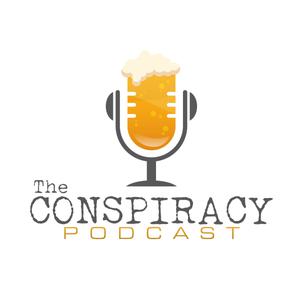
The Conspiracy Podcast
The Conspiracy Podcast
Three guys with three high school diplomas pick apart famous conspiracies. Sit down with Sean, Jorge and Eric as they walk you through the most famous conspiracy theories and their stories. From the most well known like JFK, The Moon Landing, 9/11 to the smaller ones that never seem to go away. The goal is to learn as much about the real story as possible to see if the theories hold up. www.theconspiracypodcast.com [email protected] Support this podcast: https://podcasters.spotify.com/pod/show/theconspiracypodcast/support
- 56 minutes 20 secondsMalaysia Airlines Flight 370 Disappearance: Part One - EP 97
Malaysia Airlines Flight 370. On March 8, 2014, a Boeing 777-200ER scheduled to fly from Kuala Lumpur to Beijing mysteriously vanished from radar with 227 passengers and 12 crew members on board, sparking one of the biggest aviation mysteries in history.
The episode begins with a detailed look at the pre-flight circumstances and the profiles of key crew members. Captain Zaharie Ahmad Shah, a veteran pilot with Malaysia Airlines since 1981, boasted over 18,000 flight hours. His impeccable reputation and passion for flying make his involvement in the disappearance a central point of intrigue. Despite speculative media reports about personal issues, no evidence conclusively ties him to any wrongdoing.
The co-pilot, First Officer Fariq Abdul Hamid, was in the final stages of his Boeing 777 certification, with Flight 370 being one of his last training flights. Fariq was regarded as professional and dedicated.
As the aircraft took off smoothly at 00:42, everything appeared normal with the Boeing 777-200ER climbing to its cruising altitude. The routine status of the flight continued until 1:07 a.m., when the last ACARS transmission was sent, showing nothing out of the ordinary. However, at 1:19 a.m., the tone shifts as the crew performs a standard voice check-in, with the haunting last words, "All right, good night," spoken as the aircraft left Malaysian airspace.
Dramatically, at 1:21 a.m., the transponder ceased transmission. The disappearance of the transponder signal marks a critical juncture in the flight’s journey, leading to the aircraft vanishing from radar screens. This pivotal moment led to an exhaustive international search and spawned numerous theories ranging from hijacking and pilot suicide to mechanical failure.
The narrative then shifts to the extensive search operations that spanned the South China Sea and the Indian Ocean. Despite deploying advanced technology and covering vast areas, no conclusive evidence of the aircraft was found until a flaperon was discovered on Réunion Island in 2015, confirming the aircraft had indeed met a tragic end over the ocean.
In their exploration, The Boys discuss the role of Inmarsat satellite data, which played a crucial part in narrowing the search area by analyzing "pings" from the aircraft post-disappearance. This analysis suggested a southern trajectory over the Indian Ocean, away from any traditional flight paths.
The episode concludes with a discussion on the aftermath of the disappearance, including the impact on the passengers' families and the aviation industry. The mystery of Flight 370 continues to evoke questions, making it a compelling story of human tragedy intertwined with technological mystery.
14 January 2025, 11:30 am - 2 hours 3 secondsMartha Moxley & The Kennedy's - Compilation
On the night before Halloween in 1975, Martha Moxley, a vibrant 15-year-old, set out to spend the evening with friends and neighbors in the upscale community of Belle Haven, Greenwich, Connecticut. By the following morning, the quiet neighborhood would be forever scarred. Martha’s lifeless body was found in her backyard, brutally murdered with a golf club—a crime so shocking it reverberated across the nation.
In the days following her death, investigators were faced with a tangled web of leads. What began as a local tragedy quickly unraveled into a case that highlighted the sharp divide between privilege and justice. The focus soon turned to the Skakel family, neighbors of the Moxleys and relatives of the Kennedy clan. Reports indicated Martha had spent her final evening with the Skakel brothers, Michael and Thomas, both of whom became central figures in the investigation.
As the case developed, whispers of influence and power began to overshadow the pursuit of justice. Despite mounting suspicion and evidence, including accounts of inconsistent alibis and troubling behavior from members of the Skakel family, the investigation stalled. For years, the case remained cold, leaving Martha’s family and the community in anguish, haunted by the lack of accountability.
Over the decades, the case would resurface, each time with renewed attention and controversy. In 2000, Michael Skakel, the nephew of Ethel Kennedy, was arrested and charged with Martha’s murder. His trial captivated the public as prosecutors laid out a timeline implicating Michael, citing his alleged confession to a classmate years earlier. Convicted in 2002, he was sentenced to 20 years to life in prison.
However, this was far from the resolution many had hoped for. In the years following his conviction, Michael Skakel’s legal team challenged the verdict, citing insufficient representation and procedural flaws. In 2013, his conviction was overturned, and he was released on bail. The case remains a contentious topic, with ongoing debates about guilt, privilege, and the elusiveness of justice.
Originally recorded and release as EP 52 and EP 53 in January 2023.
Resources and Further Reading:
Exclusive Content: https://podcasters.spotify.com/pod/show/theconspiracypodcast/subscribe
Patreon: https://www.patreon.com/theconspiracypodcast
Website: www.theconspiracypodcast.com
Email: [email protected]
7 January 2025, 12:30 pm - 1 hour 6 minutesLas Vegas Mass Shooting 2017 Part Two - EP 96
Part two of the Las Vegas Mass Shooting in 2017, Sean, Jorge, and Eric—dive into one of the most perplexing and devastating events in modern U.S. history: the 2017 Las Vegas shooting. Known as the deadliest mass shooting in America, it left 60 dead, over 850 injured, and countless questions that remain unanswered.
This episode explores the investigation that unfolded in the days, weeks, and months following the attack. From the arsenal of weapons found in Paddock’s suite to his surveillance setup and cryptic handwritten notes, Sean, Jorge, and Eric dissect the layers of preparation that reveal a methodical yet inexplicable mind. The team also discusses Paddock’s digital footprint, including his unsettling searches for other large public events, his encrypted files, and his lack of an ideological manifesto.
But what drives this discussion are the theories. Was Paddock motivated by financial stress, undiagnosed mental health issues, or an obsession with notoriety? Did his actions have ties to a broader, hidden conspiracy involving illegal arms deals or even government manipulation? And how credible are the claims of terrorism links made by groups like ISIS, which were ultimately dismissed by U.S. authorities?
The boys also delve into the ripple effects of the tragedy. From the federal ban on bump stocks to MGM Resorts’ $800 million settlement with victims, they examine how the shooting changed the conversations around gun control, corporate responsibility, and public safety.
Ultimately, Sean, Jorge, and Eric grapple with the central question: Why? Despite an exhaustive investigation, the lack of a definitive motive leaves a lingering sense of uncertainty and fuels endless speculation.
Join the boys for a thoughtful, investigative into one of the most haunting events of our time, as they unpack the facts, the theories, and the unanswered questions surrounding the Las Vegas shooting.
31 December 2024, 11:00 am - 8 minutes 25 secondsChristmas Special - A Visit From Saint Nicholas
On a snowy evening in December 1823, a poem titled A Visit from St. Nicholas—better known as The Night Before Christmas—made its debut in the Troy Sentinel. The enchanting story of Santa Claus, a jolly figure flying in a sleigh pulled by reindeer, transformed how Christmas was celebrated, turning it into the family-focused holiday we cherish today. But who truly wrote it? While Manhattan professor Clement Clarke Moore claimed authorship in 1844, others argue it was Henry Livingston Jr., a poet from New York’s Hudson Valley. This episode unravels the fascinating origins of the poem that gave us Santa’s iconic image, the reindeer’s thunderous names, and a heartwarming farewell: “Happy Christmas to all, and to all a good night.” Grab your cocoa, hot toddy or irish coffee and cozy up next to the "fire" with Sean, Jorge and Eric.
24 December 2024, 12:00 pm - 57 minutes 27 secondsThe Las Vegas Mass Shooting 2017 Part One - EP 95
On the night of October 1, 2017, the Route 91 Harvest music festival became the site of the deadliest mass shooting in modern U.S. history. Stephen Paddock, a 64-year-old high-stakes gambler, opened fire from a suite on the 32nd floor of the Mandalay Bay Resort and Casino, killing 60 and injuring hundreds more in a horrific 10-minute attack. In this episode, Sean, Jorge, and Eric take a closer look at the chilling timeline of events, the unanswered questions.
The boys explore the life of Stephen Paddock, a man who outwardly appeared affluent and unremarkable but harbored deep isolation and paranoia. They detail his meticulous planning for the attack—transporting over 20 suitcases of firearms and ammunition to his hotel room, scouting other major events like Lollapalooza, and setting up surveillance cameras to monitor the hallway outside his suite. Despite these calculated actions, his motive remains a mystery even after an exhaustive year-long FBI investigation.
the boys recount the chaos on the festival grounds as gunfire rained down, leaving 22,000 concertgoers scrambling for their lives. They delve into the police response, including the bravery of hotel security guard Jesus Campos, who was shot in the leg while helping pinpoint the shooter’s location, and the SWAT team’s eventual breach of Paddock’s room.
Beyond the timeline, Sean, Jorge, and Eric address the long-lasting effects of this tragedy. They examine the debates over bump stocks, which allowed Paddock’s weapons to mimic automatic fire, and how this event shaped conversations around gun control in America.
Patreon -- https://www.patreon.com/theconspiracypodcast Our Website - www.theconspiracypodcast.com Our Email - [email protected]
17 December 2024, 11:00 am - 42 minutes 20 secondsNews of the Month - UnitedHealth CEO Shooting - Bitcoin Surges - Hunter Biden Pardoned - TikTok Ban
December's most significant news stories, offering insights and analysis on each.
Tragic Loss of UnitedHealthcare CEO Brian Thompson
The boys discuss the shocking murder of UnitedHealthcare CEO Brian Thompson, who was fatally shot in a targeted attack outside a Manhattan hotel. They explore the details of the incident, the ongoing investigation, and the recent detention of a suspect in Altoona, Pennsylvania, found with a gun and fake IDs.
Bitcoin's Historic Surge
Bitcoin has surpassed the $100,000 mark for the first time, marking a significant milestone in the cryptocurrency's history. The hosts analyze the factors contributing to this surge, including the impact of the recent U.S. presidential election and the potential implications for the future of digital currencies. Additionally recent news involving the "hawk tuah" girl Hailey Welch.
President Biden's Controversial Pardon of Hunter Biden
President Joe Biden issued a full and unconditional pardon for his son, Hunter Biden, covering offenses committed between January 1, 2014, and December 1, 2024. The boys examine the scope of this pardon, the political reactions, and the broader implications for presidential pardon powers.
Federal Appeals Court Upholds TikTok Ban
A federal appeals court has upheld a law that could lead to a U.S. ban on TikTok, citing national security concerns due to its Chinese ownership. The hosts discuss the legal reasoning behind the decision, TikTok's plans to appeal to the Supreme Court, and what this means for the app's 170 million U.S. users.
Join Sean, Jorge, and Eric as they navigate these complex stories, providing their unique perspectives
December 2024 Patreon -- https://www.patreon.com/theconspiracypodcast Our Website - www.theconspiracypodcast.com Our Email - [email protected]
10 December 2024, 9:30 am - 1 hour 10 minutesMurders in the Bayou: The Jefferson Davis 8 - EP 94
The Jefferson Davis 8, also known as the Jennings 8. Between 2005 and 2009, the small town of Jennings in Jefferson Davis Parish became the chilling backdrop for a series of unsolved murders. Eight women, each with their own story of struggle and survival, were found dead under eerily similar circumstances. Their lives, and their untimely deaths, left a trail of unanswered questions, baffling conspiracies, and a lingering sense of injustice.
The boys explore life in Jennings, a close-knit rural community steeped in Southern charm but marred by systemic poverty and a growing shadow of criminal activity. As they peel back the layers, the harsh realities of life in Jefferson Davis Parish emerge, from economic hardship to the prevalence of drug trafficking. This backdrop becomes central to understanding the vulnerability of the victims and the shocking failures that followed.
Each victim's story is brought to light—mothers, daughters, and friends navigating challenging lives in an environment that seemed to conspire against them. From Loretta Chaisson Lewis to Necole Guillory, Sean, Jorge, and Eric detail their tragic paths and the hauntingly similar circumstances surrounding their deaths.
The boys don’t stop there. They dive into the botched investigations, allegations of police corruption, and the systemic failures that seem almost too sinister to believe. Was the local sheriff's office complicit? Did their connections to the victims and the drug scene hinder justice? Or were they simply overwhelmed by the scale of this dark mystery?
Join the conversation as they explore the various theories—from the possibility of a serial killer to the involvement of organized crime, and even the chilling thought of a network of killers exploiting the vulnerability of a marginalized community. The boys navigate the twists and turns of this case, balancing hard facts with the heartbreaking realities of the families left behind.
Get ready to uncover the secrets of the Jefferson Davis 8—a case that remains as baffling as it is heartbreaking.
Patreon -- https://www.patreon.com/theconspiracypodcast Our Website - www.theconspiracypodcast.com Our Email - [email protected]
3 December 2024, 3:17 pm - 1 hour 16 minutesLiving in a Simulation - EP 93
Are we living in reality—or something else entirely? The boys dive into the Simulation Hypothesis, exploring the provocative idea that our world might be an advanced computer simulation. This theory, first formally introduced by philosopher Nick Bostrom in 2003, challenges everything we think we know.
Join Sean, Jorge, and Eric as they trace the roots of this idea, starting with ancient philosophies. They uncover fascinating parallels: Plato’s cave allegory, where shadows on a wall symbolize a distorted perception of reality; Zhuangzi’s butterfly dream, blurring the line between dream and existence; and Hindu philosophy’s concept of Maya, the illusion that masks the true nature of the universe. From ancient Greece to the Aztecs’ dreamlike view of life, the boys connect the dots to our modern understanding of simulated realities.
Fast forward to the rise of computers and AI in the 20th century. The industrial revolution sparked the imagination, and video games like The Sims raised philosophical questions. By the time The Matrix hit theaters in 1999, the Simulation Hypothesis had entered pop culture. The boys discuss how Nick Bostrom’s trilemma builds on these ideas, suggesting we’re likely part of a simulation rather than the original “base reality.”
But how would we know? They explore “clues” in physics, like the observer effect in quantum mechanics or the mathematical precision of the universe. Could moments like déjà vu or the Mandela Effect be glitches in the simulation?
Of course, there’s always room for conspiracy. The boys speculate about hidden controllers—are we part of an experiment, a punishment, or even entertainment for advanced beings? From ethical questions about free will to wild theories about escape routes and secret cabals, this episode is packed with mind-bending ideas.
Buckle up as the boys question reality itself in this journey through philosophy, science, and the mysterious limits of human perception. Listen now to see if you’re ready to take the red pill.
Patreon -- https://www.patreon.com/theconspiracypodcast Our Website - www.theconspiracypodcast.com Our Email - [email protected]
26 November 2024, 11:30 am - 1 hour 17 secondsJack the Ripper Part Two - EP 92
In part two of Jack the Ripper, the boys dive deep into the shadowy world surrounding one of history's most infamous and mysterious murder cases. With the fog of Whitechapel still lingering in our minds from Part One, this episode shifts focus from the brutal acts of Jack the Ripper to the plethora of suspects and the wild conspiracy theories that have gripped investigators and enthusiasts for over a century. Who could have been responsible for the terror that stalked the East End in the late 1800s, and why do so many theories, both plausible and far-fetched, continue to captivate us today?
The boys guide listeners through the list of the Ripper’s most famous suspects, including Montague John Druitt, the troubled barrister whose untimely death coincided with the end of the murders; Aaron Kosminski, the Polish barber plagued by mental illness and closely watched by the police; and Sir William Gull, Queen Victoria’s personal physician, whose involvement is tied to elaborate Masonic conspiracy theories. They’ll explore the reasons these figures have been scrutinized, from police memos and eyewitness testimony to psychological profiling, all while weighing the strengths and weaknesses of the evidence against them.
Next, the episode unfolds into the tangled web of conspiracy theories that surround the case. The boys delve into the sensational story of a royal cover-up involving Prince Albert Victor and his alleged scandalous connections to the victims. They’ll unravel Stephen Knight’s famous theory from Jack the Ripper: The Final Solution, which suggests a chilling Masonic plot designed to protect the monarchy. And for those who love the truly bizarre, they’ll even touch on the theory that H.H. Holmes, America’s first documented serial killer, may have crossed the Atlantic to carry out his crimes in London.
Through every twist and turn, the boys keep the storytelling engaging, balancing well-researched facts with a healthy dose of skepticism. Expect deep dives, surprising connections, and moments that will leave you questioning what you thought you knew about this enduring mystery. Buckle up as the boys navigate the murky waters of Jack the Ripper’s suspects and the many theories that still haunt us to this day.
Patreon -- https://www.patreon.com/theconspiracypodcast Our Website - www.theconspiracypodcast.com Our Email - [email protected]
19 November 2024, 11:30 am - 58 minutes 17 secondsJack the Ripper Part One - EP 91
The haunting tale of Jack the Ripper, join the boys as they take you back to the dark, mist-shrouded streets of Whitechapel, England, in the late 1800s. In this first installment, they set the stage for one of the most chilling and enduring mysteries in history, exploring the harsh realities of life in East London, where poverty, crime, and desperation ruled the streets. Amid the flickering glow of gas lamps and the ever-present fog, Whitechapel was a place where people struggled to survive, living in overcrowded slums and doss-houses, with danger lurking around every corner.
The story unfolds against this bleak backdrop, where the Ripper’s reign of terror began. The boys delve deep into the details of the five confirmed murders that sent shockwaves through the community: Mary Ann Nichols, Annie Chapman, Elizabeth Stride, Catherine Eddowes, and Mary Jane Kelly. Each woman’s life and brutal death are recounted with vivid detail, highlighting the terror that gripped the streets of Whitechapel. The victims, all vulnerable women, faced unimaginable horror as the Ripper struck in the dead of night, vanishing into the shadows without leaving a trace. As the gruesome murders unfolded, fear spread like wildfire, and the press sensationalized the killings, giving rise to the infamous name that would haunt history.
The boys paint a vivid picture of the investigations that ensued, as well as the rising hysteria among Whitechapel’s residents. Policemen patrolled the cobblestone streets, vigilantes took up arms, and citizens whispered about the monster that seemed to be watching them from the dark. Through historical records, they bring to life the gripping sense of dread and the public’s desperate need for answers. The mystery of the Ripper’s identity became an obsession, with countless theories swirling about who this sadistic killer could be.
In this first part, you’ll explore how Jack the Ripper’s legacy of fear and intrigue became etched into history. The boys’ storytelling invites you into a world of unsolved crime, where the figure of the Ripper still looms large over London’s past, a ghostly reminder of the brutality and horror that once held Whitechapel in a deathly grip.
Patreon -- https://www.patreon.com/theconspiracypodcast Our Website - www.theconspiracypodcast.com Our Email - [email protected]
12 November 2024, 12:30 pm - 4 hours 34 secondsUFOs, UAPs and Aliens Compilation Episode
Compilation episode originally recorded in 4 parts in October of 2023. UFOs, UAPs and Aliens.
From the earliest records of human civilization, mysterious celestial objects have been documented. This episode dives deep into those early encounters, starting with ancient civilizations like the Sumerians, whose sacred texts describe inexplicable phenomena. These early accounts continue to challenge our understanding of the universe and fuel the ongoing mystery surrounding UFOs.
The episode goes on to explore one of the more haunting aspects of UFO history—sightings reported during World War II. Soldiers in the heat of battle frequently encountered unidentifiable objects in the sky, described as defying the laws of physics. These chilling stories remind us that even during the darkest times, the unknown has always lurked above.
As the episode unfolds, it becomes clear that UFO fascination is far from a modern phenomenon. This enduring mystery has left its mark on human consciousness, as the curiosity to uncover our place in the cosmos continues to inspire exploration and speculation.
Part two of the series dives into one of the most famous UFO incidents in history—the Roswell crash of 1947. The story begins with a rancher discovering strange debris scattered across his land. Initially, the government proclaimed the discovery of a “flying disc,” a statement that shook the nation. However, the subsequent retraction by authorities only added fuel to conspiracy theories, making Roswell an enduring mystery that still captures the public imagination. The hosts investigate witness reports, government responses, and the many theories that have since emerged about what really happened in the New Mexico desert.
In another episode, the boys take on the mysterious Area 51, a name synonymous with UFO lore and conspiracy. Located in the Nevada desert, Area 51 has long been the subject of speculation regarding secret government experiments and extraterrestrial encounters. The episode explores the origins of this top-secret military base and delves into the many UFO sightings reported around it, all while questioning what might really be going on behind its heavily guarded gates.
The series concludes with an examination of modern UFO encounters, including the well-known USS Nimitz incident of 2004. In this case, an unidentified craft was tracked over the Pacific Ocean, moving in ways that defied physics and leaving Navy pilots baffled. The episode highlights how, even in recent years, UFOs and UAPs remain unexplained, continuing to captivate and confound both experts and the general public alike.
Patreon -- https://www.patreon.com/theconspiracypodcast Our Website - www.theconspiracypodcast.com Our Email - [email protected]
22 October 2024, 1:30 pm - More Episodes? Get the App
Your feedback is valuable to us. Should you encounter any bugs, glitches, lack of functionality or other problems, please email us on [email protected] or join Moon.FM Telegram Group where you can talk directly to the dev team who are happy to answer any queries.
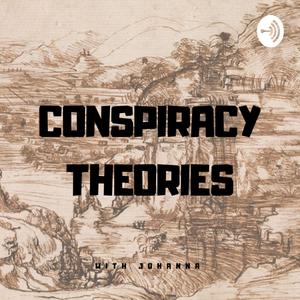 Conspiracy Theories
Conspiracy Theories
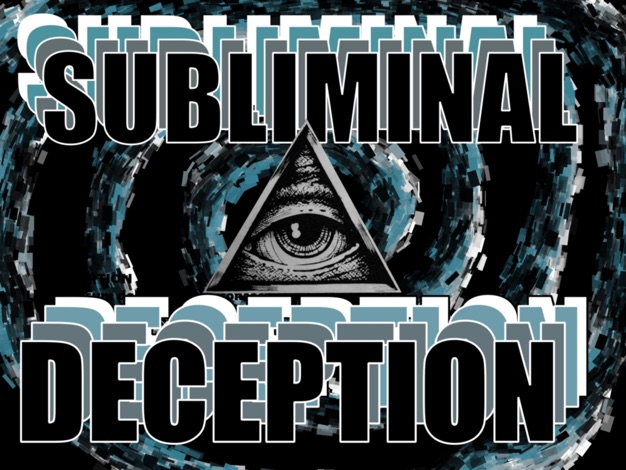 Subliminal Deception: A Conspiracy Theory Podcast
Subliminal Deception: A Conspiracy Theory Podcast
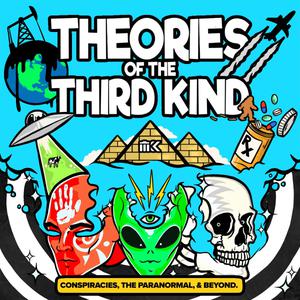 Theories of the Third Kind
Theories of the Third Kind
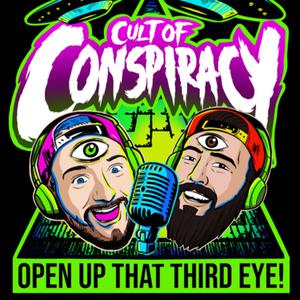 Cult of Conspiracy
Cult of Conspiracy
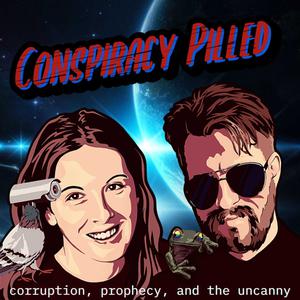 Conspiracy Pilled
Conspiracy Pilled
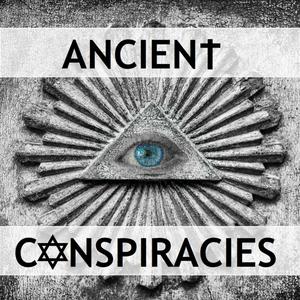 Ancient Conspiracies
Ancient Conspiracies